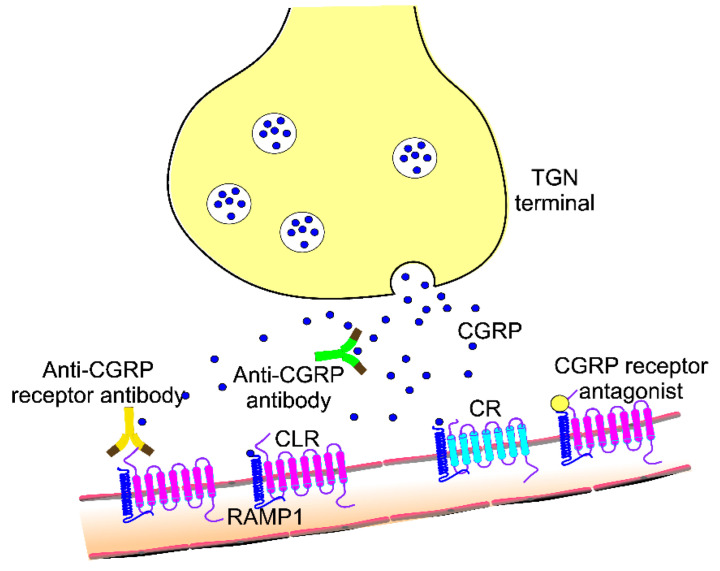Figure 1.
Pharmacodynamics of binding calcitonin gene-related peptide (CGRP) and its receptors by monoclonal antibodies and receptor antagonists (gepants) in the trigeminovasculature. CGRP is released from free endings of trigeminal nerve (TGN) afferents and can be blocked by its antibodies, preventing its binding with receptors and possible internalization, leading to dural vasodilation and neurogenic inflammation and positive feedback leading to peripheral sensitization. CGRP may bind its canonical receptor consisting of a G protein-coupled receptor (not presented here), calcitonin-like receptor (CLR) and an accessory protein, receptor activity-modifying protein 1 (RAMP1). A second receptor, the AMY-1 receptor, consisting of a calcitonin receptor (CR) and RAMP1, may also be targeted by CGRP. Antibodies against the CGRP receptor and its antagonists block CGRP binding. CGRP may cause cerebral vasodilation leading to central sensitization, but the exact mechanism of action antibodies against CGRP and its receptor is poorly known as these antibodies do not appreciably cross the blood-brain barrier.

